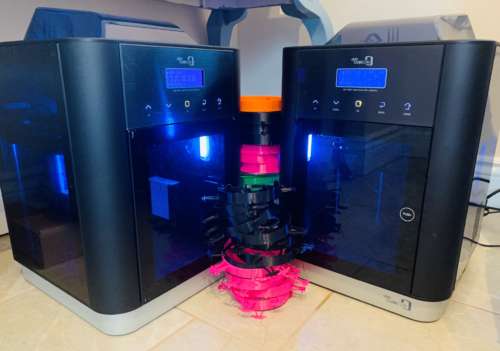
This article is republished from The Conversation under a Creative Commons licence. Read the original article.
2020 was doomed to become shaky.
No one fully foresaw the extent of the COVID-19 crisis. Business has been disrupted and will not necessarily go back to normal. Instead, the current disruption has changed and continues to change the business landscape as we know it.
How can business leaders react to the challenges, reassess what they do, reconfigure their companies and reinvent their activities to adapt to the disruption and prepare for the new normal?
The implications of climate change, new technologies, digitalization, demographic changes, artificial intelligence, and financial and political uncertainties have moved many of us. We saw a significant event coming, but the pandemic has likely taken it at least one level up from our expectations.
Some companies may have advanced their digitalization capabilities in the past few years. These companies are likely experiencing, at least in the short term, only a moderate impact due to the global pandemic. By shifting their operations to remote work via online conferencing and communication tools like Zoom and Slack, most projects continue.
Companies in industries heavily affected by the restriction of physical movement however, such as hotels and airlines and those less prepared for technological changes (many retailers, for example) are seeing their operations shattered.
Reacting to the crisis

When crises first hit, companies need to react to immediate challenges and threats. At that point, it’s important not to lose sight of doing the right thing. Businesses must remain true to their vision, be empathetic to stakeholders, make quick decisions and adjust those decisions, if necessary, frequently and transparently on the basis of new information in order to adapt quickly.
The actions by Air Canada illustrate this principle very well. Air Canada laid off 16,500 employees as a fast and direct response to a reduction of their flight schedule due to the decline of demand and border closures for non-residents. Recently, the federal government communicated the details of a wage subsidy package. Right after, Air Canada announced it was immediately rehiring most of their people based on the 75 per cent wage subsidies promised by the government.
In disruption, operational challenges need solutions, cash management and liquidity need to be adjusted for the changes in demand and communications and leadership must be expanded into the digital space.
If companies haven’t been online before, they likely are now. In a fast-changing marketplace, aggressively pushing new solutions into the market may help some companies. Many business issues resulting from disruption due to worldwide efforts to contain the spread of COVID-19 will need quick fixes and solutions. They are also the beginning of new problems.
Reassessing long-term plans

Next, businesses must reassess not only their plans for the year, but also on a longer-term basis. The exercise may reveal important insights. Resilience is valuable in crisis. However, just bouncing back from such a consequential worldwide event is not enough. We will likely see long-lasting changes on both the demand and supply side.
Short term, we may see the gin distillery in town producing hand sanitizers as is happening in Toronto and elsewhere, or the maker space at the local university 3D-printing protective equipment as we’re doing at the University of Guelph. This is a good moment for businesses to assess their capabilities and how they can be used to meet immediate needs or can be leveraged, upgraded or complemented with new technologies or partners.
Over the long term, finding and pursuing new opportunities will drive change. Companies may now serve new, different customers. They may need to get out of their comfort zones and learn new skills.
And in an online world, data strategies and analytics matter. Writing skills are as important as presentation skills. Cybersecurity becomes a strategic concern. Whatever the changes needed, change will become the new normal.
Reconfiguring and reinventing
It’s critical that companies continuously move in the right direction as the pandemic shutdowns continue. Businesses that have change ingrained in their culture are likely to do better in uncertain times.
A crisis like this brings new opportunities and should be a trigger to explore new directions. A recent study shows that sustaining innovations developed during a crisis often yields a positive impact in the long run as opposed to organizations that cut back innovation budgets.
Government will invest more over the coming years to help mitigate the impact of COVID-19. How they direct this spending, whether it’s aimed at restoring the old economy or triggering market changes, will have an impact on a business’s outlook as well.
We are likely entering a time in which people change consumption patterns. Fitness solutions for home, home entertainment, people-tracking and data security, new health-care equipment and online education solutions, to name just a few, will be in higher demand.
All of these developments create many new opportunities for businesses.
Prof. Felix Arndt, John F. Wood Chair in Entrepreneurship